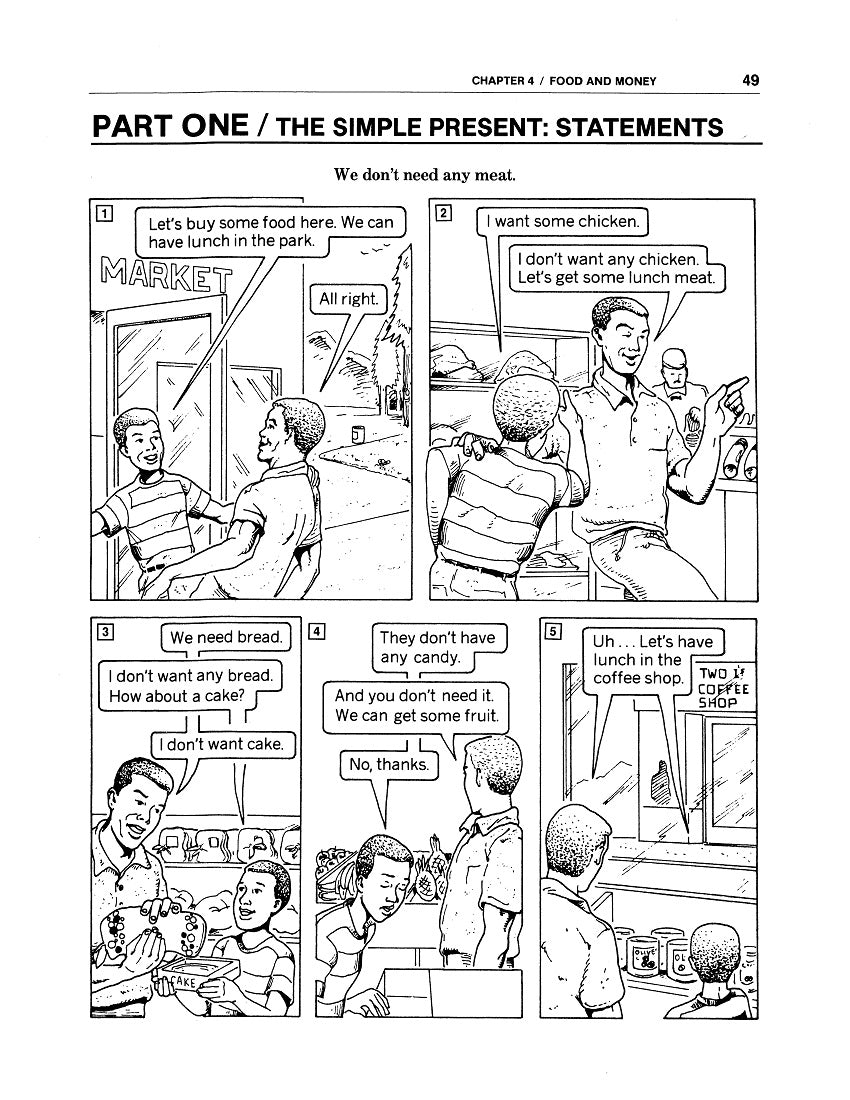1
/
of
3
Work/Life English
D-03.01 Put Simple Present Base Verbs into Statements & Questions
D-03.01 Put Simple Present Base Verbs into Statements & Questions
Regular price
$1.00 USD
Regular price
Sale price
$1.00 USD
Unit price
/
per
Parts One to Three of Chapter 4 (Simple Present Statements & Questions: “Food & Money”) of WorkLife English Life Skills, Workbook 1
9 pages
Who It’s For: (Teachers & Helpers of) Beginning Language Learners
Why It’s Useful: The simple form of verbs (without added endings) forms the core of Statements with all sentence subjects except the Third-Person Singular (he, she, it). The “helping verbs” don’t and do are needed in Negative Statements & Questions. Here’s a straightforward introduction to this grammar.
What You’ll Do:
[1] With participants, pantomime and read aloud the Strip Story “We Don’t Need Any Meat” on page 49. It contains five frames that illustrate the grammatical patterns of simple-present statements.
[2] With the Grammar-Pattern Box, identify sentence elements: Subjects, Verbs (Negative Marker), Noun Objects. To do so, you might say directives that begin with base verbs like “Point to . . . ” or “Tell . . . .” (Have everyone) Notice sentence word-order. Differentiate between Affirmative and Negative.
[3] For Exercises A-D on pages 50-51, (help learners) respond to instructions—perhaps by adding clarifying directives like “Touch,” “Circle,” “Draw lines,” “Put a Word on Each Line,“ Print Sentence Parts in Order.” Use gestures/motions or demonstrate what to do when necessary.
[4] For Part Two (“We Need to Get Some Change.”) on pages 52-53, repeat Steps [1] - [3]. Emphasize the grammar of Object Pronouns as Direct & Indirect Objects.
[5] Take comparable steps for Part Three (“Do You Want to Get a Hamburger?”) on pages 54-56. Be sure to note and/or point out the sentence features that make these items into questions. Notice the formation of short answers, too.
Couldn't load pickup availability






